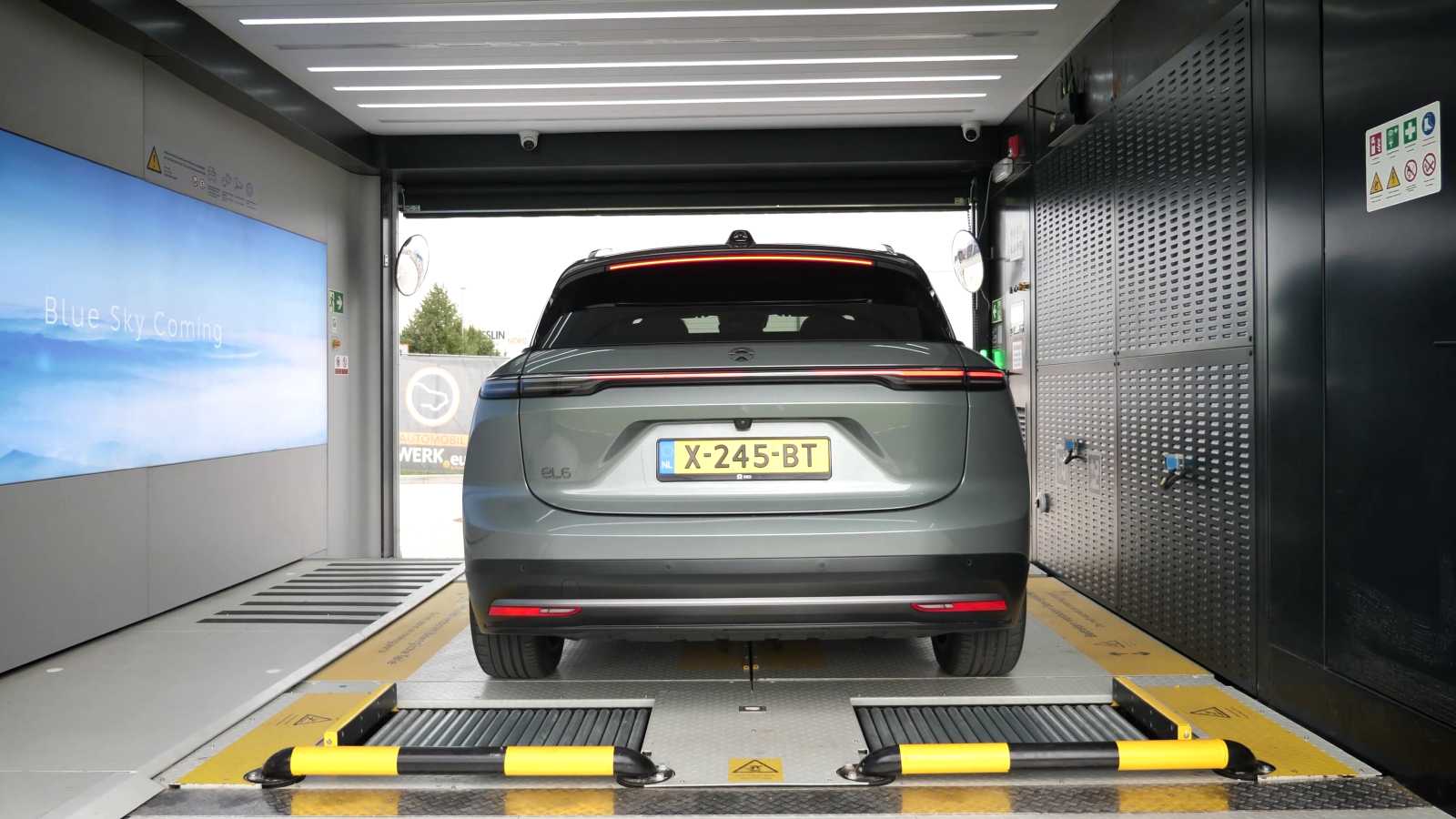TESTED: Without charging 1,100 kilometers down the Autobahn at full throttle with an EV
Full throttle on the Autobahn
Nio’s electric cars have a unique feature: they can change their battery.
No more hassle with “old-fashioned charging” during a long drive.
Empty battery out, full one in – it’s that simple.
Nio has set up about 50 battery swap stations in Northern Europe, including on the route from the Netherlands to Berlin.
Roadtrip
So on a sunny Friday afternoon in September we decide to set sail from Hellendoorn (Overijssel) to Berlin, some 550 kilometers away.
Not a chicken’s end but not a round-the-world trip either.
However, most of the route is on the Autobahn – the natural enemy of every electric car.
But hey, according to Nio, we can swap an empty battery for a full one within five minutes.
So, no reason to worry.
As soon as we cross the border at Oldenzaal, we step on the gas pedal deeply.
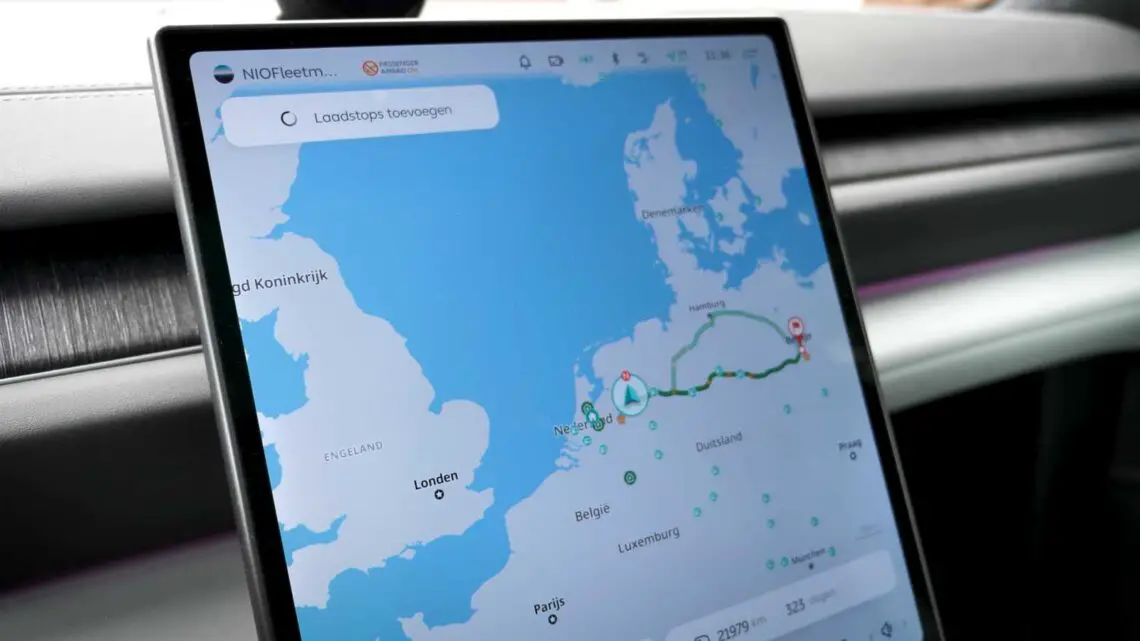

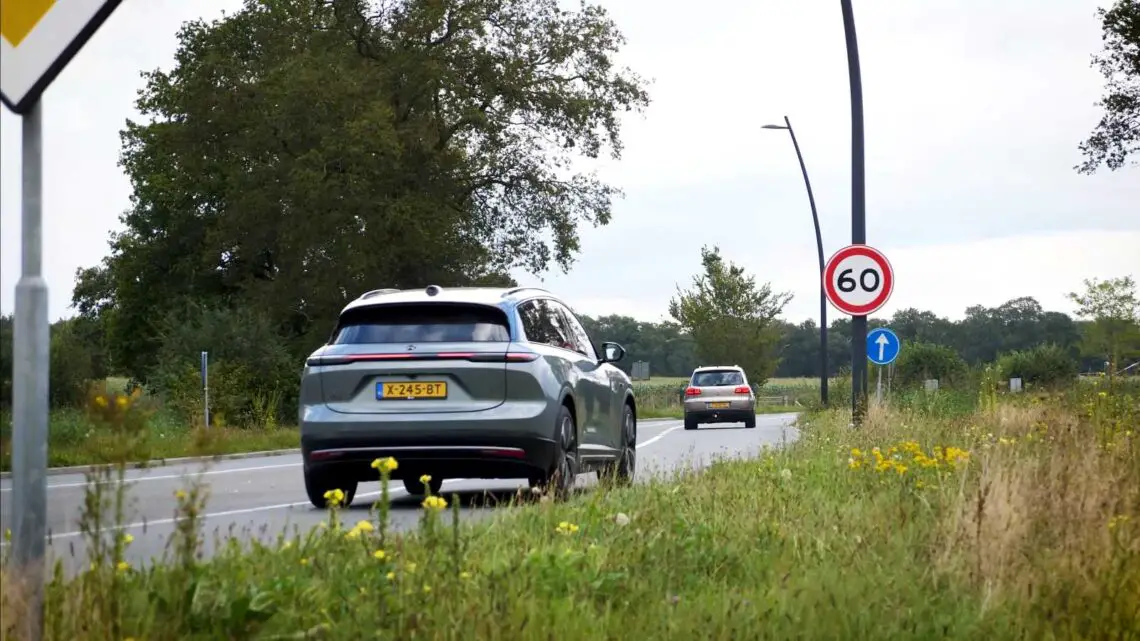
Navigation
The Nio’s navigation system automatically calculates where and when the car needs to change batteries, just as a “regular” electric car does with charging stations.
Are there no switching stations nearby?
Then the Nio suggests a fast charger, or a combination of fast chargers and switching stations.
On the route to Berlin – but also towards Munich and on almost all popular routes in Scandinavia – there are plenty of switching stations, making charging actually unnecessary.
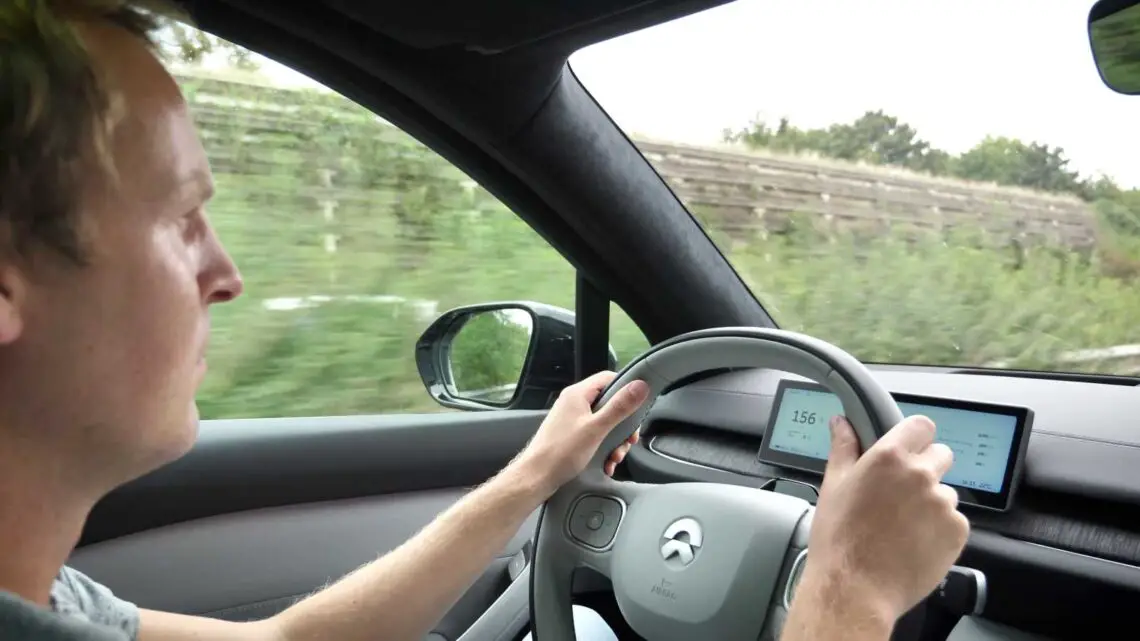

Battery change: simple and quick
The Nio sends us off the Autobahn at Kirchlengern, where the first swap station awaits us.
At a Nio “Power Swap Station,” everything is automatic.
Park the car in the compartment in front of the station and the system does the rest.
It even drives the car into the charging station automatically.
The car is lifted slightly there, the empty battery is unscrewed and a full one replaces it.
The process takes just a few minutes and you’re ready for the next stage.
In Europe there are now about 50 exchange stations.
In the Netherlands, for example, you’ll find them in Amsterdam, Rotterdam, Utrecht, Apeldoorn, Arnhem and Assen.
In China there are many more: 2,500 of them.
Worldwide, nearly 50 million switches have already been done, of which more than 71,000 in Europe.
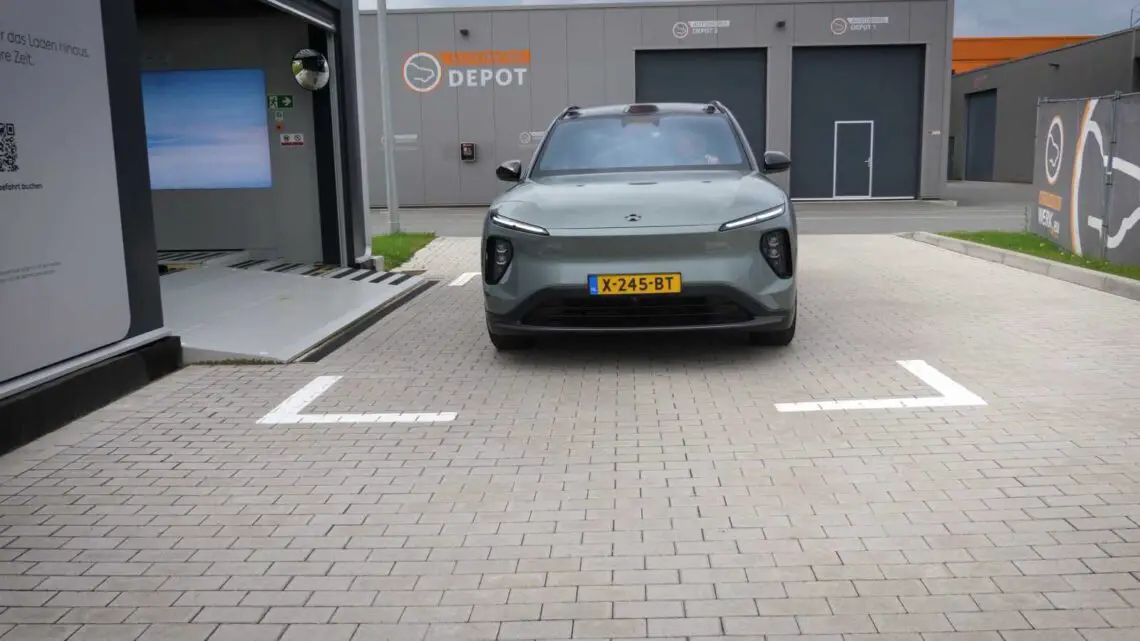

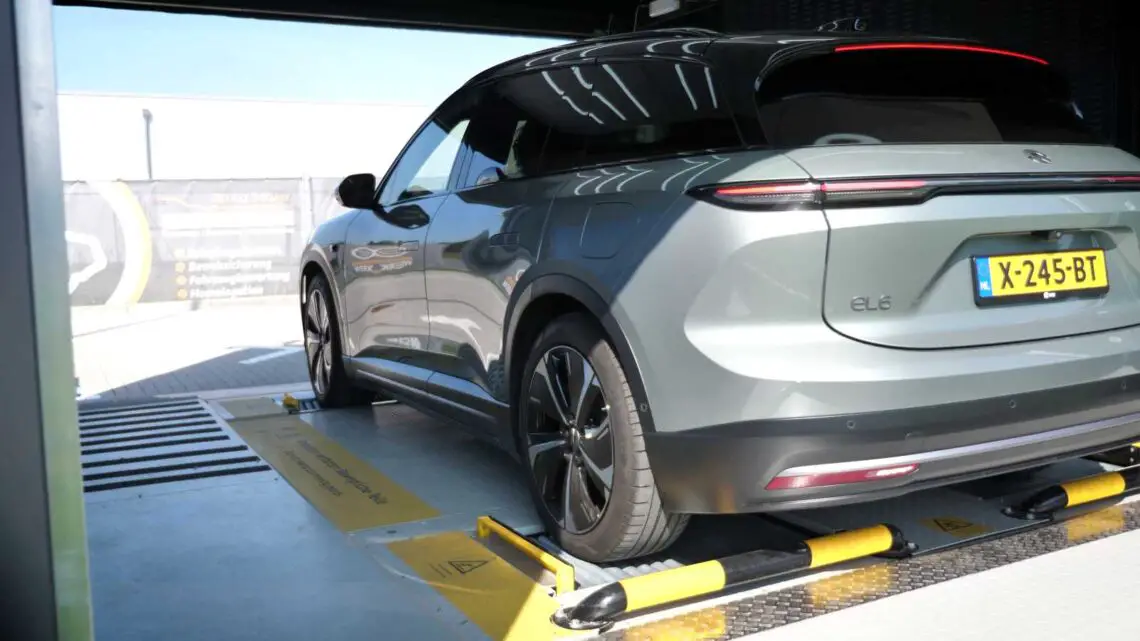
Hanover
We set course for Hanover, but soon find ourselves in a heavy afternoon rush hour.
After Hannover we are ready for a short break and drive to the changing station in Lehre.
While changing the battery you are not allowed to leave the car, so we take some extra time for a coffee and pee break.
Fortunately, most swap stations are near gas stations, often along the highway, where you’ll also find fast chargers from well-known providers.
Oddly enough, the coffee break feels a bit like lost time, because we are used to getting coffee while charging.
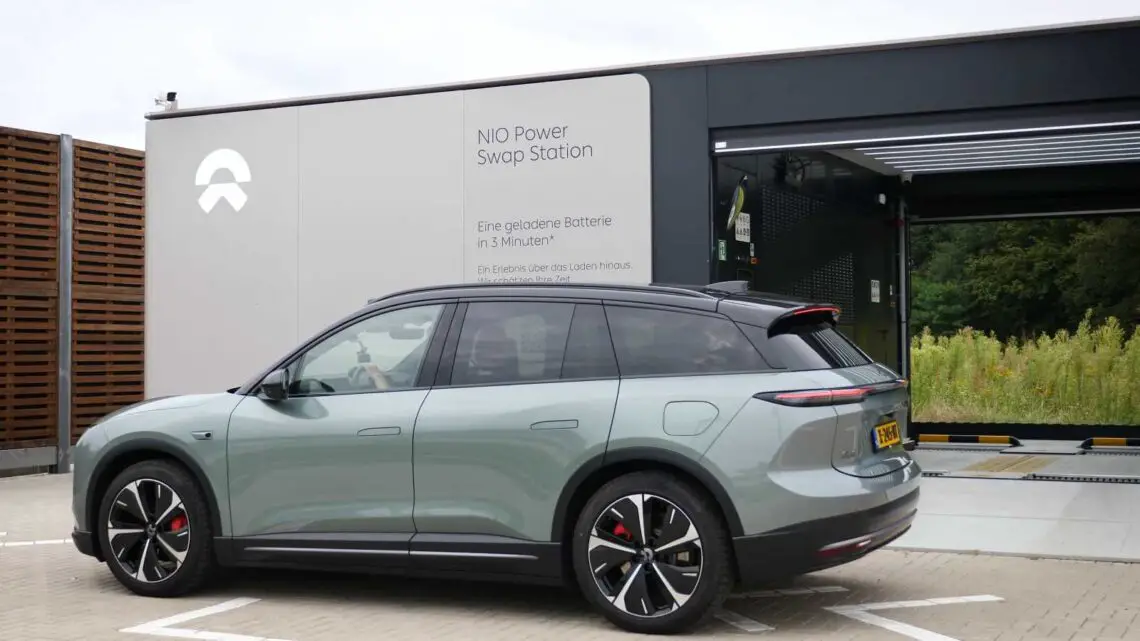
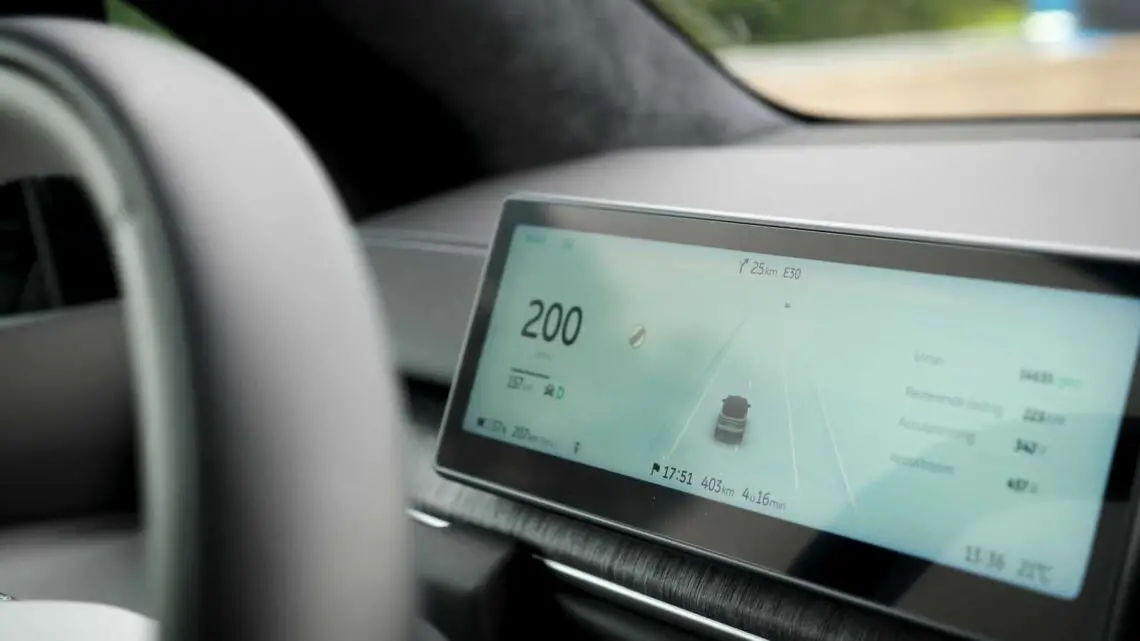
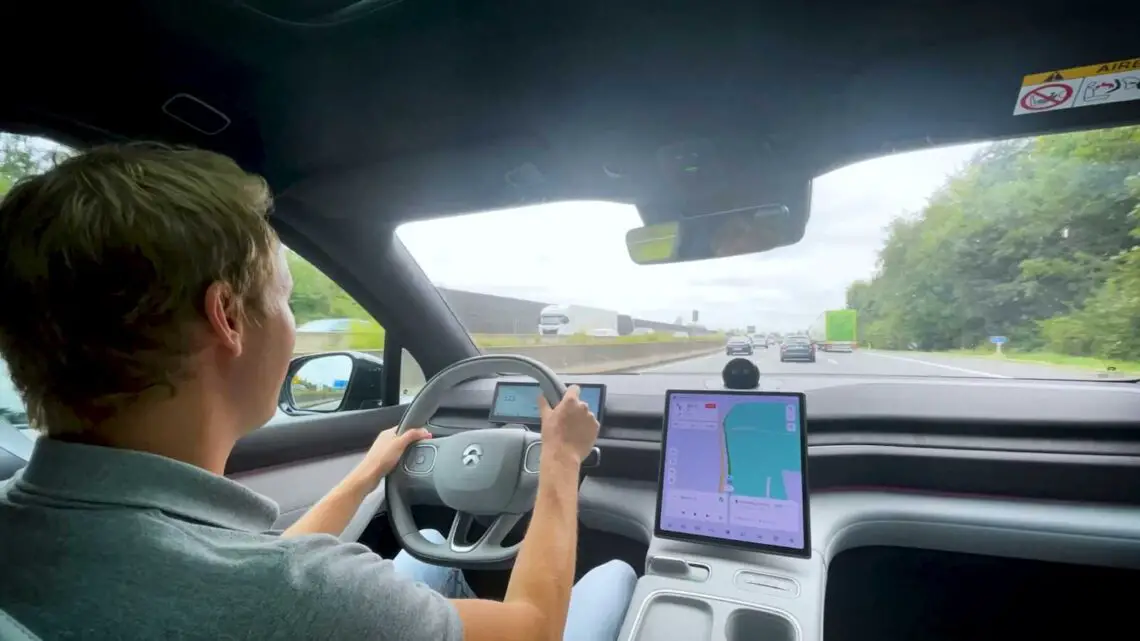
Berlin
After Lehre, the traffic finally begins to clear up and we shoot toward Berlin at top speed (200 km/h).
Of course you see the range evaporate like snow in the sun at this rate, but what does it matter?
In Berlin, the next changing station is already waiting to give us a full battery.
Through the screen you can reserve a battery, so you have security.
It also indicates if there are people in the queue.
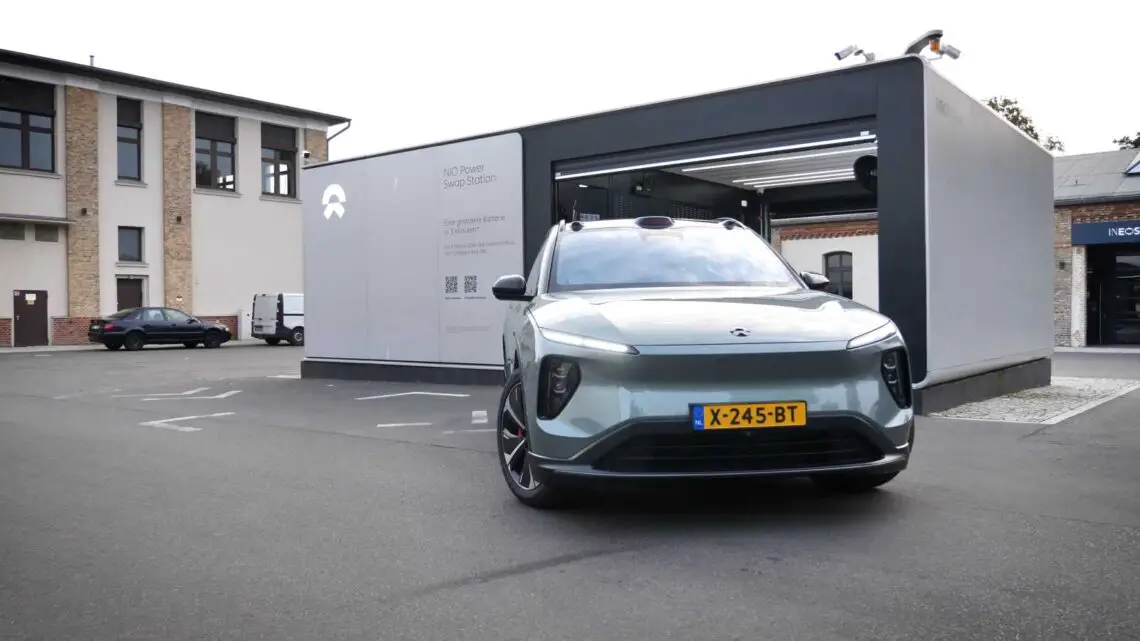
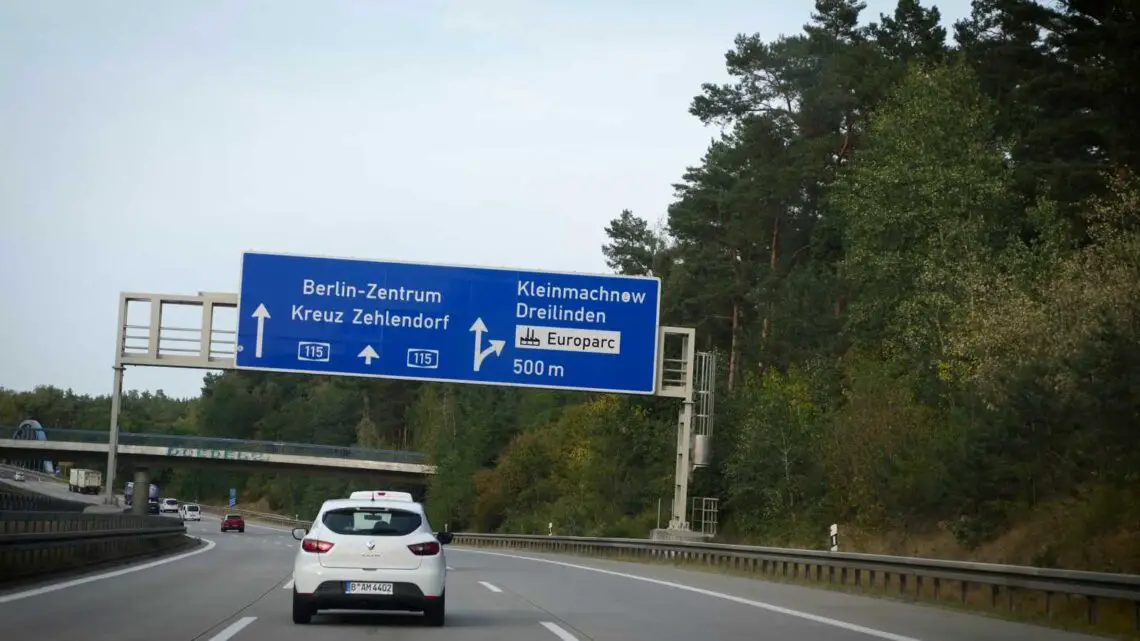
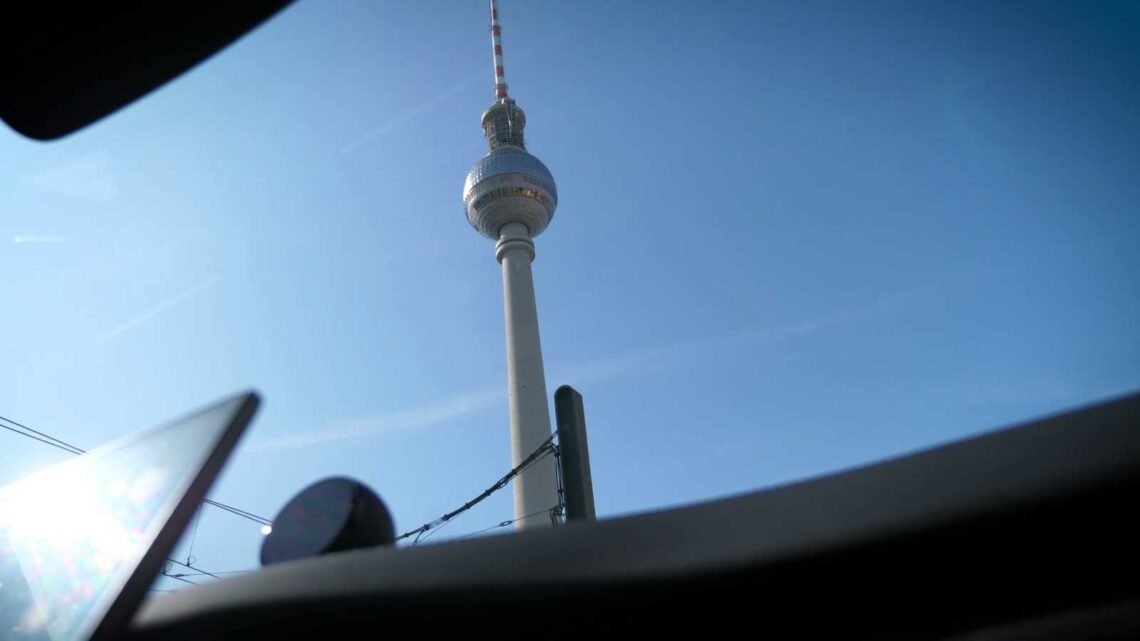
Conclusion
With Nio’s battery swap system, you can easily drive long distances without ever having to charge, even if you accelerate vigorously.
While we don’t normally object to a charging break here and there during a long drive, we have to admit that driving without charging stops was surprisingly comfortable.
It really feels like you’re driving a diesel or gasoline car, but with the benefits of an electric powertrain.
Is this the future?
Well, that remains pie in the sky.
With models like the Lotus Eletre, Porsche Taycan and Audi e-tron GT charging almost as fast as refueling these days, that remains to be seen.
But for now, Nio definitely has an edge.
So if you’re always in a hurry and don’t feel like charging stops, the Nio EL6 should be high on your wish list!
Cost that?
For a battery swap, Nio charges ten euros, plus the electricity cost of about 44 cents per kWh.
A reasonable rate, as charging providers such as Fastned, Allego and Ionity charge considerably more along the highway.
The Nio EL6 we drove the road trip with costs 68,000 euros, including the 75 kWh battery.
If you opt for battery rental, you pay 56,000 euros for the car and rent the battery for 170 euros a month for the 75 kWh battery, or 290 euros for the 100 kWh battery.
You can – if you go on vacation, for example – choose to temporarily switch battery sizes.
All Nio models can change their battery: the Nio ET5, ET5 Touring, EL7 and EL8.
Watch the video here: TESTED: Without charging 1100 kilometers down the Autobahn full throttle with an EV – It just can!?

